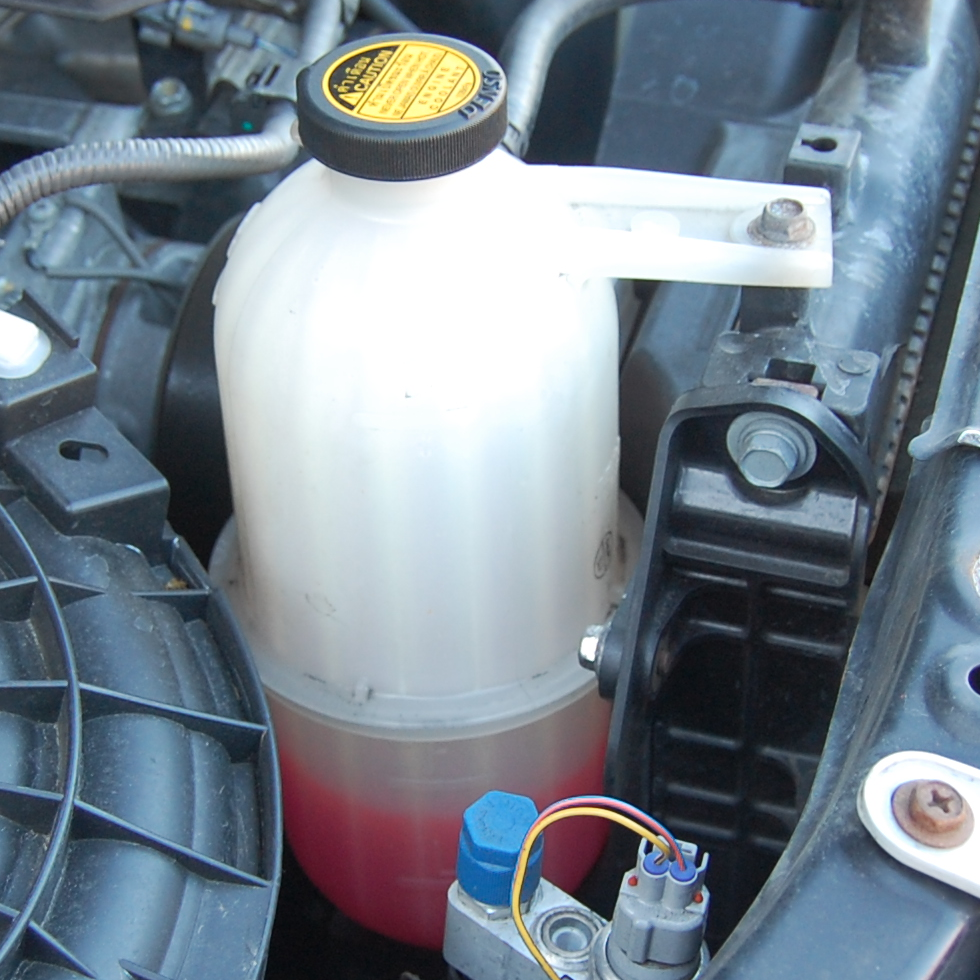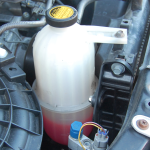Local Storage seems to be disabled in your browser.
For the best experience on our site, be sure to turn on Local Storage in your browser.
How often should you change your engine coolant?
 Antifreeze or otherwise known as coolant, is the coloured fluid (usually red, sometimes green) found in your radiator & cooling system. You should be changing your antifreeze at least every two years, it is just as important as engine oil.
Antifreeze or otherwise known as coolant, is the coloured fluid (usually red, sometimes green) found in your radiator & cooling system. You should be changing your antifreeze at least every two years, it is just as important as engine oil.
Antifreeze costs very little but a new engine costs considerably more; preventing freezing will reduce the possibility of a cracked radiator or cracked cylinder head and the need for an expensive replacement. Corrosion can build up inside the engines cooling system which can block the system and easily overheat the engine.
Ensure the concentration of water in your vehicle’s antifreeze is correct quickly and simply with a quality antifreeze tester, you should test the antifreeze on every service to make sure the mixture will hold to the lowest temperature possible for your area. Too much water runs the risk of diluting the antifreeze, preventing it from doing its job.
Anti-freeze is not just for winter, it serves many purposes of which many are not aware of, most importantly;
- Preventing the water in your radiator and engine from freezing in cold temperatures, preventing obvious catastrophic and expensive results.
- It also helps prevent overheating and evaporation in hot conditions by increasing the boiling point temperature that water cannot reach, this allows the engine to run at its designed operating temperature; thus reducing heat-related problems and engine failure.
- The third function of anti-freeze, or coolant is lubrication, it lubricates the moving parts it comes in contact with, like the water pumps and thermostats.
Which coolant should you use?
Toyota’s latest specifications recommend using Red Long-Life Antifreeze Coolant, it is widely recognised as having a longer service life. It’s extremely durable and is developed specifically to meet the requirements of your Toyota’s engine. We recommend checking your coolant system at every service interval, replacing if necessary or simply topping up.
Red coolant was originally sourced from Japanese suppliers and supplied to Japanese and alike destined vehicles whereas the Green is sourced from France in the main and used on models destined for the European markets. Generally imported vehicles would have originally used Red coolant from factory. But be careful, over the years coolants would have or should have been changed. It is always best to physically check your current coolant by removing the radiator cap when the engine is cold.
Until recently it has been widely known throughout the industry that Red and Green LLC coolants were not to be mixed. Toyota has now reviewed their current coolant range and after an in-depth investigation have informed all Toyota dealerships that Toyota Green LLC is now fully interchangeable with the Toyota Red LLC. In fact, they have now discontinued the Green LLC completely so only Red LLC is available.
How do I change my coolant?
Firstly the number one rule is NEVER MIX different types and grades of coolant together, mixing coolant can cause unusual reactions.
When replacing coolant make sure you remove all traces of old, dirty and muddy coolant from the system by flushing the system thoroughly back and forth several times with a hose pipe from all access points.
Often corrosion can build up inside the cast engine blocks and block the cooling system, this commonly causing overheating because the coolant cannot cycle to keep the engine cool.
Make sure all the heater controls (front & rear if fitted) are set to full heat, this will flush all coolant out of the heater matrixes.
Removing the thermostat at the same time will help with the coolant changing operation and gives an ideal opportunity to test your thermostat is opening at the correct temperature.
Next replenish the cooling system with the Genuine Toyota Long-life Red Coolant or Comma Super Long-life Red Coolant & Antifreeze Concentrate. RoughTrax do not recommend any other type of coolants.
Overheating & freezing can cause serious damage to your vehicles engine & components. The coolant must contain the correct concentration when topping up or re-filling.
Ensure to follow the correct specification guidelines dependent on the coolant you are replacing with.
> View our range of Coolant/Antifreeze here
